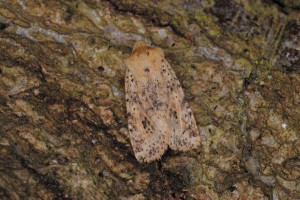<title>Suffolk Moths Blog » Antony Wren</title>
<atom:link href="http://suffolkmoths.org.uk/blog/index.php/author/antony_wren/feed/" rel="self" type="application/rss+xml"/>
<link>http://suffolkmoths.org.uk/blog</link>
<description>Topical information from the Suffolk Moth Group</description>
<lastBuildDate>Thu, 30 Apr 2020 14:24:25 +0000</lastBuildDate>
<language>en-US</language>
<sy:updatePeriod>hourly</sy:updatePeriod>
<sy:updateFrequency>1</sy:updateFrequency>
<generator>https://wordpress.org/?v=3.6.1</generator>
<item>
<title>The hunt for Phyllonorycter pastorella</title>
<link>http://suffolkmoths.org.uk/blog/index.php/2019/10/31/the-hunt-for-phyllonorycter-pastorella/</link>
<comments>http://suffolkmoths.org.uk/blog/index.php/2019/10/31/the-hunt-for-phyllonorycter-pastorella/#comments</comments>
<pubDate>Thu, 31 Oct 2019 14:30:59 +0000</pubDate>
<dc:creator>Antony Wren</dc:creator>
<guid isPermaLink="false">http://suffolkmoths.org.uk/blog/?p=8041</guid>
<description>
<![CDATA[ 31.10.19 With the moth trapping season drawing to an early close this year with disappointing weather and a lack of opportunities to get out into the field, my attention has turned to leaf mines. I am out and about most … <a href="http://suffolkmoths.org.uk/blog/index.php/2019/10/31/the-hunt-for-phyllonorycter-pastorella/">Continue reading <span class="meta-nav">→</span></a> ]]>
</description>
<content:encoded>
<![CDATA[ <p>31.10.19</p>
<p>With the moth trapping season drawing to an early close this year with disappointing weather and a lack of opportunities to get out into the field, my attention has turned to leaf mines. I am out and about most days and it’s relatively easy to pick up several species of mine on the school run or walking to the shops.</p>
<p>Today I convinced my wife to have a trip to Africa Alive Zoo because there is a line of mature Willows and I was on the hunt for a moth only added to the British list in 2014.</p>
<p>I found several mines within a few minutes; <em>Phyllonorycter viminiella</em> and <em>Phyllocnistis unipunctella</em> were the most interesting. By the 3rd tree along I began to find some early stage mines which seemed to match Phyllonorycter pastorella but they could’ve been one of several species. <b><br />
</b></p>
<p>After half an hour of searching I found something very interesting and quickly snapped a photo to get a second opinion… Dr John Langmaid and a few others suggested that the mine was a perfect match for <em>Phyllonorycter pastorella</em>.</p>
<p><a href="http://suffolkmoths.org.uk/blog/wp-content/uploads/2019/10/inbound8088767484869025634.jpg"><img class="alignnone size-medium wp-image-8042" alt="inbound8088767484869025634" src="http://suffolkmoths.org.uk/blog/wp-content/uploads/2019/10/inbound8088767484869025634-167x300.jpg" width="167" height="300" /></a></p>
<p>Antony</p>
]]>
</content:encoded>
<wfw:commentRss>http://suffolkmoths.org.uk/blog/index.php/2019/10/31/the-hunt-for-phyllonorycter-pastorella/feed/</wfw:commentRss>
<slash:comments>0</slash:comments>
...</item>
<item>
<title>Dunwich Woods 26.4.19</title>
<link>http://suffolkmoths.org.uk/blog/index.php/2019/04/28/dunwich-woods-26-4-19/</link>
<comments>http://suffolkmoths.org.uk/blog/index.php/2019/04/28/dunwich-woods-26-4-19/#comments</comments>
<pubDate>Sun, 28 Apr 2019 22:50:43 +0000</pubDate>
<dc:creator>Antony Wren</dc:creator>
<guid isPermaLink="false">http://suffolkmoths.org.uk/blog/?p=7886</guid>
<description>
<![CDATA[ Myself and Peter conducted our 3rd trapping session at Dunwich on Friday night. We had: 3 X 125w MV 1 x 20w Wemlite and 1 x 7w LED In a 5 hour session we recorded over 120 moths of 31 … <a href="http://suffolkmoths.org.uk/blog/index.php/2019/04/28/dunwich-woods-26-4-19/">Continue reading <span class="meta-nav">→</span></a> ]]>
</description>
<content:encoded>
<![CDATA[ <p>Myself and Peter conducted our 3rd trapping session at Dunwich on Friday night.<br />
We had:<br />
3 X 125w MV<br />
1 x 20w Wemlite and<br />
1 x 7w LED</p>
<p>In a 5 hour session we recorded over 120 moths of 31 species, the best of which were a single Dotted Chestnut and 4 Gravitarmata margarotana.</p>
<p>Although the temperature held up around 10.5 degrees, the wind probably affected the size of the catch and the rain came in at around 1am meaning a hasty pack up.<br />
<a href="http://suffolkmoths.org.uk/blog/wp-content/uploads/2019/04/49.302-Gravitarmata-margarotana-2.jpg"><img class="alignnone size-medium wp-image-7887" alt="49.302 Gravitarmata margarotana (2)" src="http://suffolkmoths.org.uk/blog/wp-content/uploads/2019/04/49.302-Gravitarmata-margarotana-2-300x200.jpg" width="300" height="200" /></a></p>
<p><a href="http://suffolkmoths.org.uk/blog/wp-content/uploads/2019/04/FB_IMG_1556401484821.jpg"><img class="alignnone size-medium wp-image-7892" alt="FB_IMG_1556401484821" src="http://suffolkmoths.org.uk/blog/wp-content/uploads/2019/04/FB_IMG_1556401484821-300x200.jpg" width="300" height="200" /></a></p>
]]>
</content:encoded>
<wfw:commentRss>http://suffolkmoths.org.uk/blog/index.php/2019/04/28/dunwich-woods-26-4-19/feed/</wfw:commentRss>
<slash:comments>0</slash:comments>
...</item>


